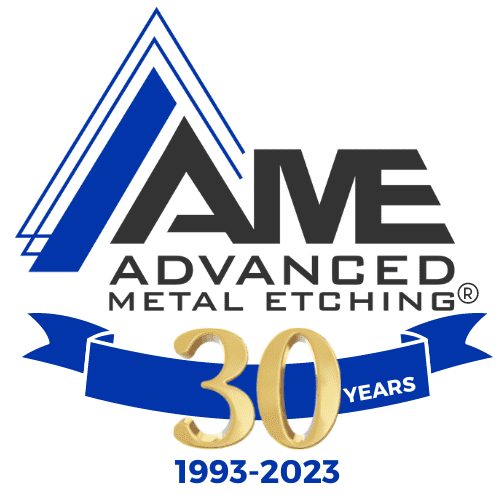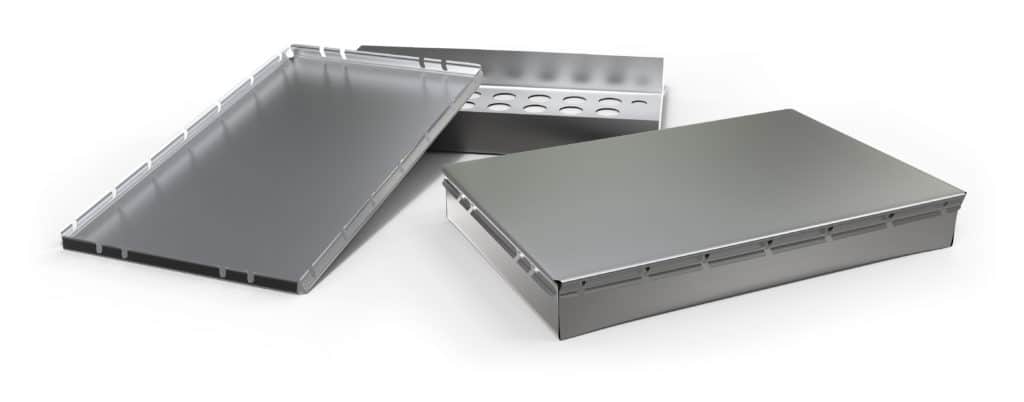When working on an electronic design project, carefully considering the type of metal used for EMI shielding is essential. This comprehensive guide will discuss the various metals and their properties, focusing on how their characteristics can impact EMI and RFI shielding.
Additionally, we will explore different plating options, such as tin, nickel, silver, and gold, and how these coatings can enhance shielding performance. Lastly, we will explore the best metal options for the chemical etching and laser cutting manufacturing processes.
EMI and RFI Shielding Overview
EMI shielding refers to using materials and manufacturing techniques to protect electronic devices from external electromagnetic interference (EMI) and radio frequency interference (RFI). This type of shielding is crucial for ensuring that signals are not disrupted by external electromagnetic signals and preventing generated signals from interfering with nearby components.
In the context of printed circuit boards (PCBs), EMI shielding is also known as board-level shielding (BLS). This type of shielding typically involves using a conductive or magnetic enclosure, such as a PCB shielding can or cage, to isolate electrical devices from their surroundings. Shielding is found in all electronic , from aerospace, automotive, medical devices, and instrumentation.
Primary Metals for EMI and RFI Shielding
Engineers must consider factors such as cost, weight, corrosion resistance, and shielding effectiveness when selecting a metal for EMI and RFI shielding. Here, we will discuss the properties and benefits of various metals commonly used in EMI and RFI shielding applications:
Copper
Copper is one of the most popular metals used for EMI shielding due to its high electrical conductivity and excellent effectiveness across various frequencies. Copper is also relatively lightweight, making it suitable for applications where weight is a concern. However, copper is prone to oxidation, which can reduce its shielding performance over time. Therefore, it is often combined with other metals or coated with a protective layer to enhance its corrosion resistance.
Copper Alloys
Beryllium copper is also used for EMI shielding. These alloys often provide similar shielding effectiveness to pure copper while offering improved mechanical and corrosion-resistant properties.
Aluminum
Aluminum is another common choice for EMI shielding due to its lightweight nature and good electrical conductivity. While its shielding effectiveness is generally lower than copper's, aluminum is more oxidant and corrosion-resistant. This makes aluminum suitable for applications where environmental conditions, such as the marine, aerospace, and automotive industries, may be harsh or corrosive.
Steels
Steels, including mild steel and stainless steel, are often used in EMI shielding applications due to their strength, durability, and cost-effectiveness. They provide moderate to high shielding effectiveness depending on the specific alloy and thickness used. Stainless steel, in particular, offers excellent corrosion resistance, making it suitable for use in harsh environments.
Nickel/Silver
Nickel silver, also known as German silver or nickel alloy, is composed of copper, nickel, and zinc. This material is widely used for EMI and RFI shielding because it offers a combination of high electrical conductivity, good corrosion resistance, and excellent shielding effectiveness across various frequencies. Nickel silver can be easily soldered and does not require additional plating to maintain its properties, making it more cost-effective.
Plating Options for Enhanced Shielding Performance
Plating or coating metal surfaces can significantly improve EMI and RFI shielding materials' shielding performance and corrosion resistance. Here are the most common plating options and their benefits:
Tin Plating
Tin plating is a cost-effective option that provides good corrosion resistance and solderability. It is often used on copper and copper alloys to enhance their shielding effectiveness and prevent oxidation. Tin plating comes in two types of finishes: matte tin and bright tin.
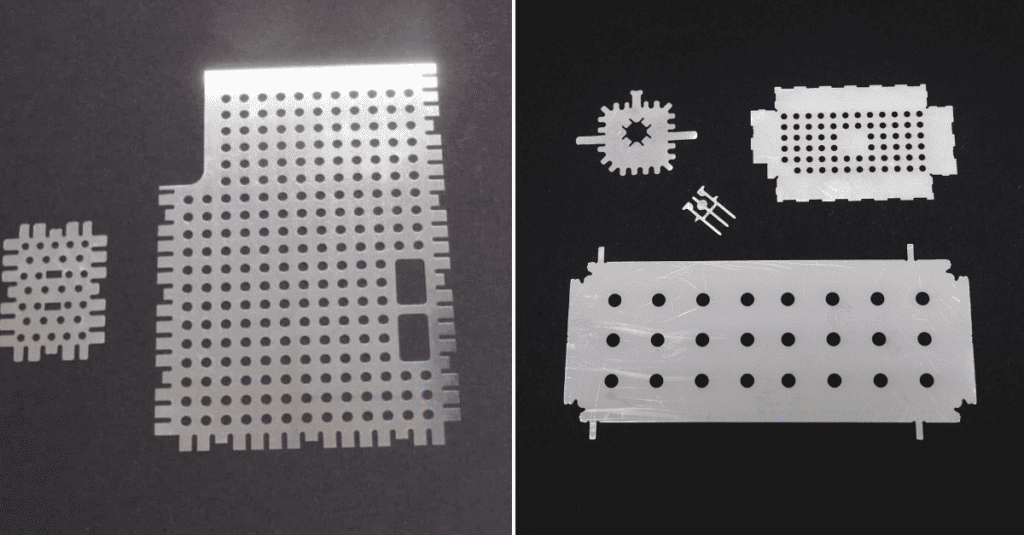
Nickel Flash Plating
Nickel flash plating involves the application of a thin layer of nickel onto the metal surface. This process improves corrosion resistance and provides a barrier against oxidation, particularly for copper and copper alloys. Nickel flash plating also enhances shielding effectiveness, as nickel has high magnetic permeability.
Silver Plating
Silver plating is often used to improve the electrical conductivity and shielding performance of metals such as copper and aluminum. It offers excellent solderability and corrosion resistance but may tarnish over time, affecting its appearance and performance.
Gold Plating
Gold plating is a premium option with exceptional corrosion resistance, solderability, and electrical conductivity. It is typically used in high-reliability applications where long-term performance and stability are critical. However, gold plating is more expensive than other options, making it less suitable for cost-sensitive projects.
Metal Selection for Chemical Etching and Laser Cutting
When choosing a metal for EMI and RFI shielding, it is essential to consider the manufacturing processes used to create the shielding components. Chemical etching and laser cutting are two standard methods for producing shielding parts, and each has its own set of requirements and considerations.
Chemical Etching
Chemical etching is a process that involves using chemicals to remove material and create the desired shape or pattern on a metal sheet. This process is well-suited for producing intricate designs and complex geometries. Some examples are half-etched score lines for hand forming, numerous holes, and logos or numbers. The best metal options for chemical etching include:
- Copper and copper alloys: These materials offer excellent etch ability and are compatible with most etching chemicals.
- Nickel silver: This material is also easily etched and offers good shielding performance.
- Aluminum: While aluminum can be chemically etched, it may require specialized etching chemicals and processes due to its high reactivity.
Laser Cutting
Laser cutting is a non-contact process that uses a high-power laser beam to cut or engrave materials. This method is suitable for producing precise, intricate designs and is compatible with various metals. The best metal options for laser cutting include:
- Steels: Mild and stainless steel is compatible with laser cutting processes and offer strength and durability.
- Aluminum: Aluminum can be laser cut but may require specialized laser systems and processes due to its high reflectivity and thermal conductivity.
Custom EMI shielding with Advanced Metal Etching®️
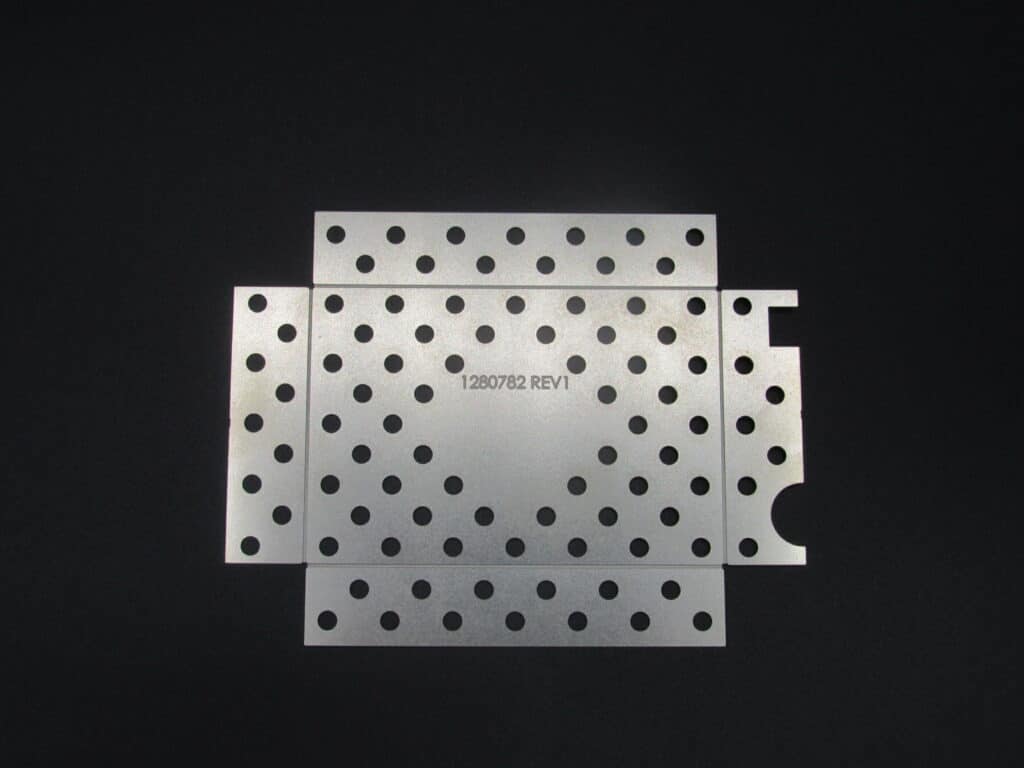
At Advanced Metal Etching, we bring extensive experience in manufacturing EMI shielding solutions across diverse industries and working with a wide range of metals. Our in-house tin plating line offers cost-effective solutions and shorter lead times, ensuring efficient production and delivery. Our advanced fiber laser machines also enable precise aluminum cutting with exceptional accuracy.
We have also developed specialized processes to etch aluminum effectively, delivering precise results without burrs. With our expertise and capabilities, we can offer metal selection assistance and are committed to providing high-quality EMI shielding solutions tailored to your specific requirements.
Conclusion
A suitable metal for custom EMI and RFI shielding is critical to electronic design. By understanding the properties and benefits of various metals and the impact of plating options and manufacturing processes, engineers can make informed decisions that optimize their shielding solutions' performance, reliability, and cost-effectiveness.
Related Post: Cutting Through the Confusion: EMI Shielding Manufacturing Methods
